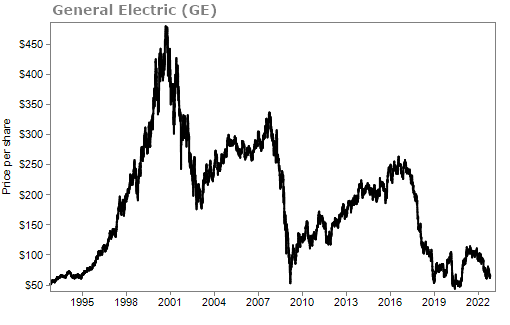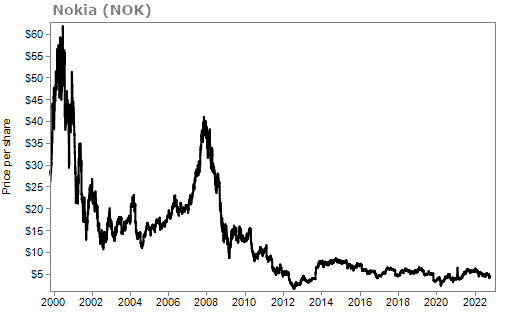Doc's note: I've said it before... Knowing when you'll sell an investment is just as important as knowing why you're buying it in the first place.
In today's issue, Keith Kaplan (CEO of our corporate affiliate TradeSmith) explains why, out of the many lessons you learn as an investor, none is more critical than when to cut your losers...
Not long ago, I watched a trading and investment video that caught my attention...
One of the world's most renowned options traders started a training course for two novices.
He was teaching them how to buy and sell call and put options.
His pupils barely understood the stock market. And they were a bit intimidated by the idea of trading call and put options.
Given this renowned trader's expertise, I expected that he would prepare them for trading greatness. After all, everyone wants to learn from people who have traded professionally and successfully for decades.
However, when the three of them gathered for their first lesson, I couldn't believe my ears.
His first question to them was simple... "What companies are on your list to buy or trade?"
The students eagerly rattled off meme stocks, Apple (AAPL), and even a few retail companies that I thought had gone out of business.
Then he asked the following question... "How do you want to enter your position?"
Despite all of his experience, I think this trader broke a cardinal rule of trading and investing by asking that question first.
The most important question is never how or where you want to buy a stock or option. The most important part of a trade is never the entrance.
It's the exit.
I don't care how long you've been trading or investing... Risk management is always the most critical component of what we do.
We want to make as much money as possible. But we also want to protect our principal and our gains, should a position go sideways.
That's why one of the first things you need to know is how and when to exit a position...
The markets are littered with stories of people who didn't take profits off the table and became too psychologically invested in their losses from all-time highs. Instead of taking gains, they found themselves stuck in a situation where a 100% gain tumbled to 0%... or even went into negative territory.
In the stock market, no company remains on top forever. The entire economy is marked by cyclical phases, changes in competition, and innovation.
During the tech bubble back in 2000, investors flocked into General Electric (GE), and shares soared. But look at what happened over time...
Things were so bad for GE that it was removed from the Dow Jones Industrial Average in 2018.
Or take a stock like Nokia (NOK)...
There was a time when this stock traded just shy of $60. It crashed after the dot-com bubble burst. But it popped back up temporarily in 2007, pushing back to $40 from the $20 range the year before.
Guess what happened next? Despite being one of the leading mobile companies globally, it suddenly found itself facing new competition from a company called Apple.
Nokia cratered. It hasn't traded above $10 in over a decade.
I could tell story after story like this... That's why knowing how to exit a position is critical to investing.
There are multiple ways to exit a trade or position to avoid the fate of those who hold on too long...
Option 1: Profit-Booking Exits
In this situation, a trader or investor sells part of his winning position to reduce risk.
So, let's say that a position increases by 25%. At that point, you might sell 25% of your stake.
For example, you buy 100 shares of a stock at $100. That's a $10,000 position.
If the stock goes to $125, your position is now worth $12,500. If you sell 25%, or $3,125, you now have 75 shares remaining.
In this situation, your breakeven stock price is no longer $100.
It has been reduced to $91.66 because you've taken some gains off the table. That $8.34 difference is one-third of your $25 gain because you still have three equal parts of the original position size.
You've protected yourself and lowered the breakeven price if the position does fall.
You can choose your profit exits, but I recommend that if a stock position ever gains 100%, you immediately sell half of your position. The reason is that you have secured your original investment capital. You are then playing with house money.
Option 2: Time Stops
A time stop is not as common for buy-and-hold investors. However, it's important to keep in mind whether big macroeconomic events are on the horizon (and when they will happen).
Recently, we saw a significant announcement from the Federal Reserve that impacted markets in a big way. If you want to reduce your exposure to similar events, you might decide to sell a position ahead of a meeting like that one. In this case, you have defined a time period for your trade.
Day traders and swing traders more commonly use time stops. Many day traders I know don't like to hold their positions for more than 30 minutes. If a stock isn't moving, the traders might move on to a different position.
Option 3: Trailing Stops
If you're like me, you don't have a ton of time to stare at your screen all day. I am a long-term, buy-and-hold investor. So I'm not engaging in too many weeklong trades unless it's an exceptional occasion.
I prefer to use trailing stops to protect my principal and gains. The best part about trailing stops is that they don't require you to manage your positions actively. If you have a position in a company that has gained 25%, your trailing stop will rise higher from your entry position as well. This acts as a protection for your existing profits.
For example, let's say you buy 100 shares of a stock at $100. You might set a trailing stop at 10% to protect yourself from a downturn. If the stock hits $90, your trailing stop will automatically exit the position. Yes, you'll have lost 10% on your position, but you'll be protected from any further downturn. If that stock falls to $75... well, you'll be happy that the stop executed at $90.
But let's say that instead of falling to $90, the stock rises to $125. You've now got a position worth $12,500.
With a 10% trailing stop, you now have protected your downside with a trailing stop at $112.50 per share.
This means that you'll have automatically protected your gains if the stock pulls back to that level. You'll exit the position with a 12.5% win. That's why I highly encourage investors to use trailing stops.
I believe that the exit to every position is by far the most important part of a trade. And I encourage you to implement some or all of these strategies in your trades today.
Regards,
Keith Kaplan
Editor's note: Recently, Keith revealed how he has been able to anticipate – often weeks in advance – the biggest market events of the past few years.
It's all thanks to a set of alerts he discovered. And his alerts show him a major move in the markets is coming.
Click here for all the details.



